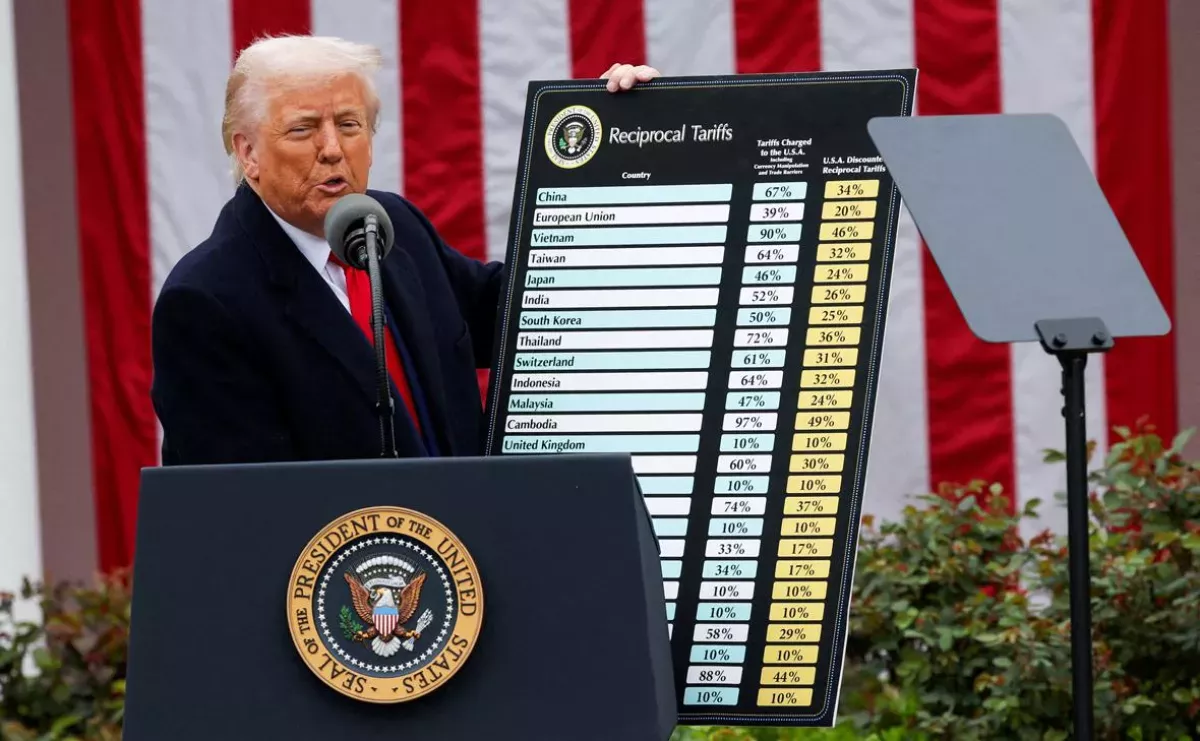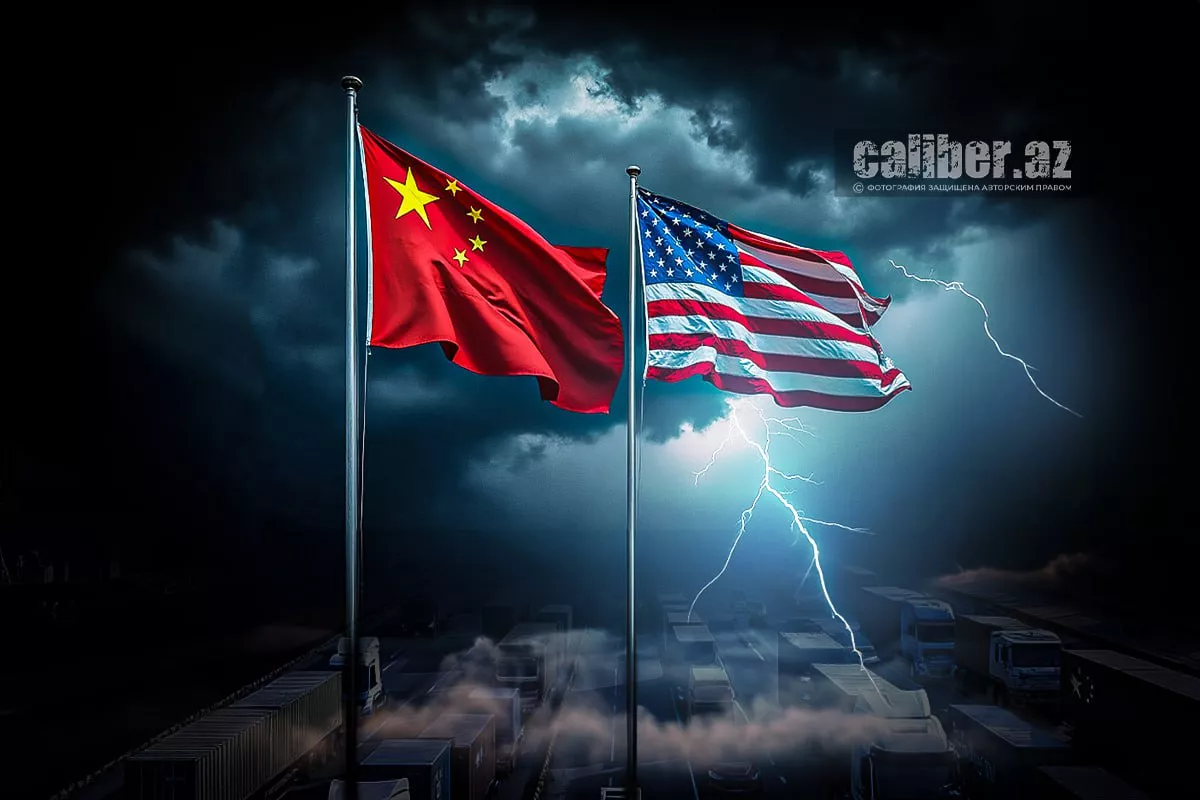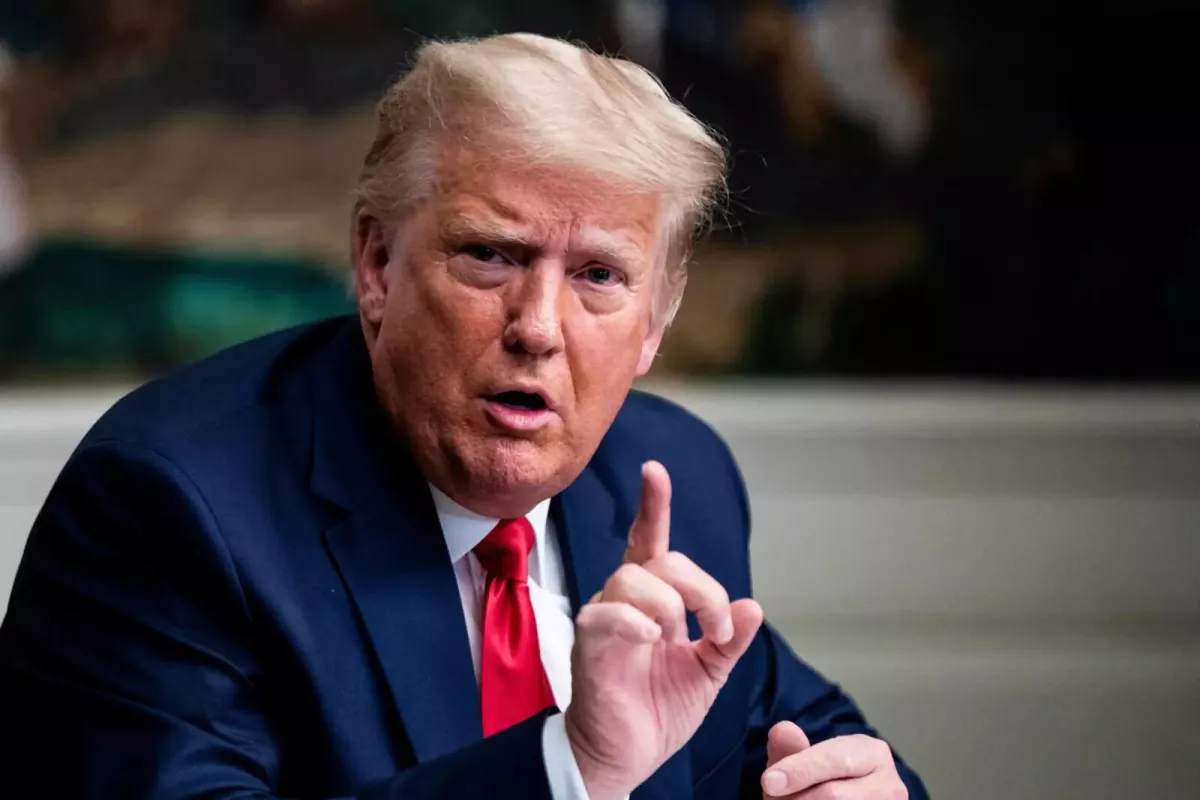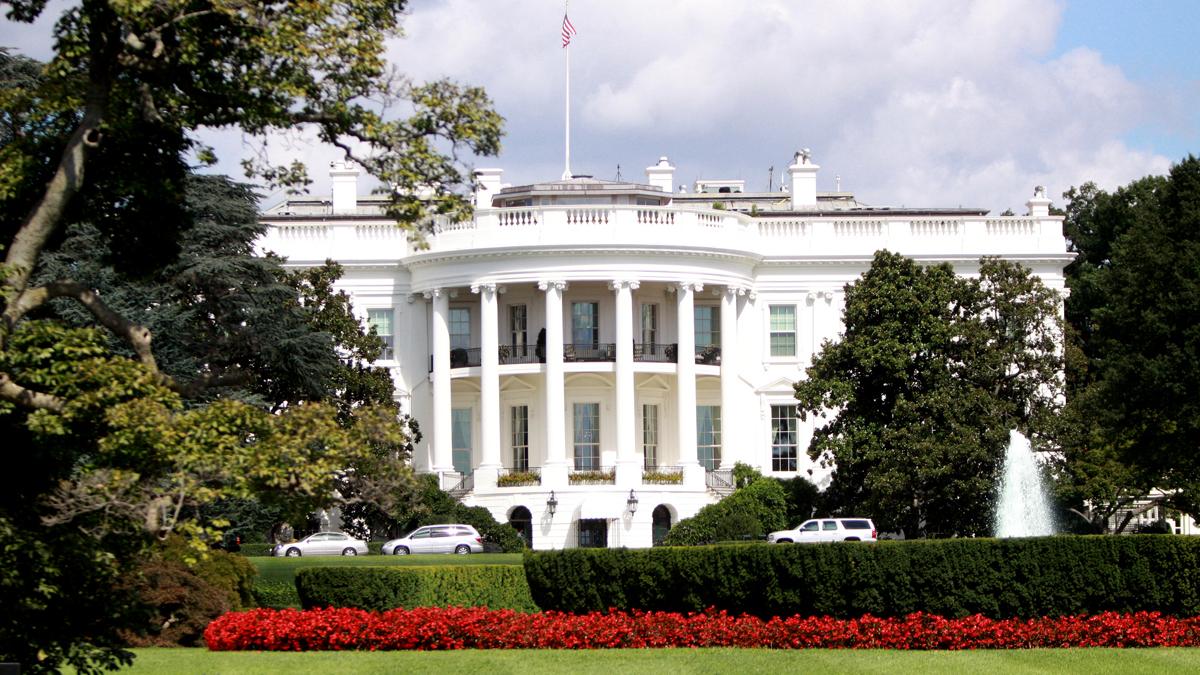Donald Trump's fortress economy Rising state control and America’s future
U.S. President Donald Trump announced that, starting November 1, he will impose an additional 100% tariff on China, as well as export controls on “any and all critical software.” This came just hours after he threatened to cancel the upcoming meeting with Chinese leader Xi Jinping, Bloomberg reports.
The measures announced by Trump will raise import tariffs on many Chinese goods to 130% starting next month. This is slightly below the 145% level imposed earlier this year, before both countries reduced tariffs as part of a truce to advance trade negotiations. Nevertheless, these tariffs will virtually destroy trade between the two countries, which amounts to around $600 billion per year. Companies on both sides could incur losses in the hundreds of billions, potentially triggering a prolonged global recession.
The U.S. stock market overall lost $1.65 trillion after Trump announced the move on social media earlier on October 10, with American shares experiencing their worst day in six months. The S&P 500 fell 2.7%, marking its worst day since April 10. The Nasdaq 100 dropped 3.5%. The cryptocurrency market lost tens of billions of dollars.
“It has just been learned that China has taken an extraordinarily aggressive position on Trade in sending an extremely hostile letter to the World, stating that they were going to, effective November 1st, 2025, impose large scale Export Controls on virtually every product they make, and some not even made by them,” Trump wrote on social media.

This move has revived fears of a global trade disruption that could effectively sever relations between the world’s two largest economies, sharply raising the stakes for both Trump and Xi Jinping in the complex trade negotiations, Bloomberg notes.
Ahead of the planned summit between Xi Jinping and Trump, the U.S. and China have taken steps to potentially limit the flow of technology and materials between the two countries. As part of recent measures, China introduced new port fees for American ships and launched an antitrust investigation into Qualcomm Inc., following renewed attempts to restrict supplies of rare earth metals essential for producing numerous consumer goods, including engines, semiconductors, and fighter jets.
On October 9, citing national security concerns, China required foreign exporters of goods containing even traces of certain rare earth metals to obtain an export license. In a separate press release, the Ministry of Commerce stated that certain types of equipment and technologies for processing rare earth metals and manufacturing magnets would also be subject to control.
On October 10, Trump acknowledged that he might back down from this tariff escalation if China lifts its threatening restrictions on rare earth metals, while noting that a meeting with Xi Jinping later this month is still possible.“That’s why I made it Nov. 1st,” Trump said. “We’ll see what happens.”
Thus, the escalation of threats may simply be a tactic for Beijing and Washington to gain leverage in negotiations. Some of the latest measures announced by Beijing were supposed to take effect by November 8, so they may not come into force before the expected Xi-Trump talks. It cannot be ruled out that everything will be resolved peacefully, and the measures may remain mere threats intended to strengthen each side’s position ahead of negotiations.

The problem lies elsewhere. Companies in both countries now have to navigate a rapidly changing trade environment amid the threat of further escalation. Such uncertainty hinders investment, making the future riskier and less predictable. Moreover, “this back and forth indicates the fragility of the bilateral relationship,” said Wendy Cutler, a former US trade negotiator.
This is far from the only issue facing the American economy that is drawing increasing concern globally. Several publications, also connected to influential corporate groups and the political establishment, have expressed alarm over recent developments.
The U.S. trade fortress
Analysts at The Economist note that the pain caused by trade and immigration restrictions cannot be postponed indefinitely. Brick by brick, President Donald Trump is building a wall around the world’s largest economy. As America raises customs barriers for all other countries, the drawbridge is also being raised, making it more difficult for migrants to enter the country.

Yet many investors see things differently. In the six months since “Liberation Day,” when Trump imposed tariffs on America’s trading partners, financial markets have swung from panic to euphoria. Inflation has risen only slightly, as U.S. importers absorbed most of the tariff burden. Although employment is stagnating due to reduced migration flows, the U.S. economy is likely to grow by 1.5–2% in 2025.
One reason for this resilience is that average tariffs are not as high as feared, partly due to rollbacks and partly due to the rapid adaptation of trade flows. It also helps that, aside from China, few countries have implemented large-scale retaliatory measures in response to U.S. tariffs. Major economies, including the United Kingdom, Japan, and the European Union, have reached agreements that reduce the tariffs proposed by Trump without imposing their own.
The president has also benefited from an extraordinary stock market boom in the U.S., fueled by optimism over artificial intelligence (AI). Since the April drop, the S&P 500 has risen by 40%.
However, the economy cannot avoid the costs of isolation, which will only grow over time.
First, the stock market cannot continue to rise at today’s rapid pace indefinitely. The higher it climbs, the greater the risk of a crash, which would have a reverse effect. The impact of the imposed tariffs is beginning to be felt. Meanwhile, the collapse of migration represents a massive and underestimated shock to the economy. Between 2000 and 2020, average annual net migration to the U.S. was 1 million people; under President Joe Biden, it reached 2.5 million per year. In 2025, net migration could reach zero or even become negative for the first time since the Great Depression.
Second, the biggest challenge will be rising inflation. Trump’s tariffs are currently raising consumer prices by 0.3 percentage points. Over the next few months, this figure is likely to increase, peaking by the end of the year. Goldman Sachs economists have found that the longer the tariffs remain in effect, the greater their impact on prices.
These factors will soon push core consumer price inflation toward 3.5%. Prices for imported goods, such as clothing, electronics, and household appliances, have already risen above trend.
Canadian Prime Minister Mark Carney hopes to strengthen ties between the CPTPP, a predominantly Asian trade bloc that includes Canada, and the EU. America is a large enough economy to step back from global trade without causing an economic cataclysm. However, over time, tariffs will undermine its competitiveness and economic power, especially if its allies integrate more closely with China. Global investors have already become more cautious about the dollar, which has fallen 9% this year against a basket of currencies.
State capitalism
Trump’s economic policy is more radical than you might think, note authors in Foreign Policy, a publication that typically features commentary from American scholars and diplomats. In their view, it is not just about tariffs but also the increasingly extensive state control and regulation employed by Donald Trump.
From the very beginning, one of the inevitable features of the U.S. president’s second term has been his activism, including—but not limited to—the economic sphere. This has led to growing government regulation, contrary to the initial libertarian statements of his officials. As a result, a distinct model of state capitalism is beginning to take shape in the United States.
Capitalism is understood as a system based on private property, wage labor, and free-market relations. When the scale of government intervention grows, it is referred to as state capitalism—a capitalist system with a high degree of government control and regulation. State capitalism implies the strategic involvement of the government in the economy and key industries, as well as the establishment of clear priorities for future economic growth through policy decisions, regulation, and investments in advanced sectors of the economy.
An important feature of contemporary U.S. state policy is that it is inextricably linked to Trump’s growing role in virtually all areas of public and political life. His statements, orders, and initiatives aim to implement an increasingly radical economic and political agenda. Moreover, as soon as Trump dominates the news with one topic, he moves on to another.
One moment he is criticising the Smithsonian Institution for focusing on slavery (the Smithsonian Institution is a group of museums, educational, and research centres in the U.S., holding the world’s largest collection of exhibits, museum assets, and artefacts).
Next, he pushes for the Pentagon to fire the head of the Defense Intelligence Agency after it expressed doubts about the consequences of the U.S. strike on Iranian nuclear sites in June.
Then he pressures Texas and other Republican-led states to redraw electoral district boundaries.
The economy is no exception. Every week brings news of significant, though never clearly articulated, departures by the U.S. government from what is usually called free-market capitalism.
Previously, governments—especially under Republican administrations—promoted the idea that private enterprises are responsible for generating wealth in the U.S., while the role of the state is to provide a stable political environment, supported by transparent and independent institutions, rather than being subject to the political whims of the executive branch.
Trump’s attack on the established U.S. system began with his campaign against Federal Reserve Chair Jerome Powell. After several weeks of relentless personal attacks from Trump and pressure to lower interest rates, Powell indicated that he would likely accede to the president’s request in September. In response, the stock market surged, but many analysts warned that “Trump’s interference in the interest rate-setting process bodes ill for the U.S. economy.”
Trump’s other actions proved no less significant. The first was the imposition of high tariffs on goods from a range of countries, reaching levels unseen since the pre-World War II period. The Trump administration carried this out while continuing to act as if other countries—not American businesses and domestic consumers—would bear the cost of the tariffs.

Next, Trump announced that the U.S. government would acquire roughly 10% of Intel, the former microchip industry leader struggling to stay afloat amid fierce competition. This came shortly after Trump demanded that the country’s two leading chip manufacturers—Nvidia and AMD—turn over 15% of their revenues from sales of strategically important processors to China, a move that at first glance might have seemed like a one-off, albeit unusual, decision.
Trump also granted Apple an exemption from 100% tariffs on microchips after the company promised to invest $100 billion in U.S. manufacturing.
Not long ago, Republican politicians, business leaders, and conservative media outlets such as Fox News were concerned about the prospect of Zohran Mamdani, who calls himself a “democratic socialist,” being elected mayor of the country’s economic capital—New York City. But the structural consequences of Mamdani’s uncertain leftist statist proposals, such as free bus transport and free daycare for the poor, pale in comparison to the scale of Trump’s measures regulating the country’s economy.
Although Trump rejects the label of socialist, some analysts have applied the term “state capitalism” to the ongoing restructuring of the American economy.
There is some truth to this. Historically, the term has been applied to a wide range of systems—from 19th- to early 20th-century Germany to modern China, and even to European countries such as France during General de Gaulle’s rule (1959–1969). It is often associated with a modernization push, when international competition compels a capitalist nation-state to concentrate all its resources to create new industries and implement cutting-edge technologies.
For example, 19th-century Germany built railways and invested in education; in the 1960s, the French state invested in universities, the automotive, aerospace, and nuclear industries.
Modern China openly promotes its model of state capitalism, aiming to dominate sectors it considers industries of the future—including digitalization, electric vehicles, solar energy, nuclear and hydroelectric power, artificial intelligence, robotics, and high-speed trains. The state is prepared to spend trillions of dollars on these objectives, as well as on improving education systems.
In the United States, the situation is different. At least in the early stages of Trump’s second term, it seems clear that his policies favour traditional industries rather than promoting new ones. In one round of trade negotiations after another, Trump has insisted that other countries buy more American oil and gas, agricultural products, and weapons. While these sectors do contain significant innovation, his choices remain limited.
Overall, Trump’s policy can be described as one of growing state control over all areas of public life, including an atypical struggle in the U.S. against universities and highly skilled migrants. And all of this is happening against the backdrop of a trade war with China, at a time when Beijing is betting on different approaches—such as extensively recruiting foreign specialists to work in its companies.








